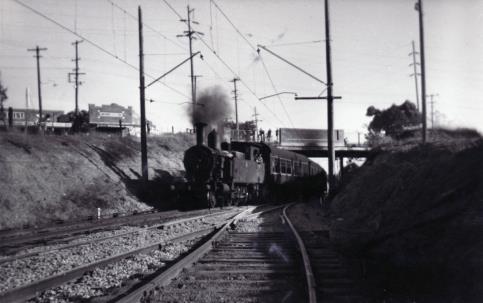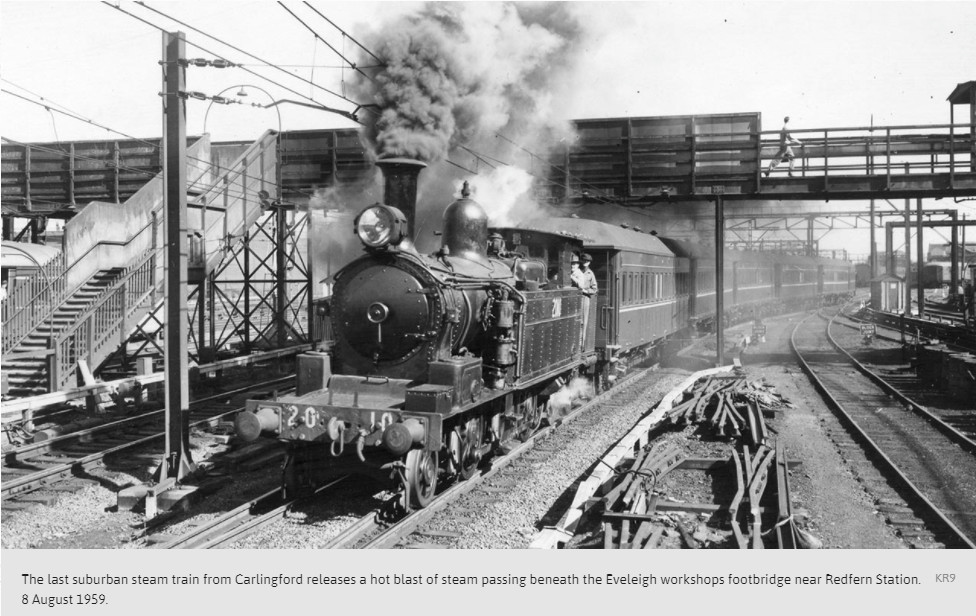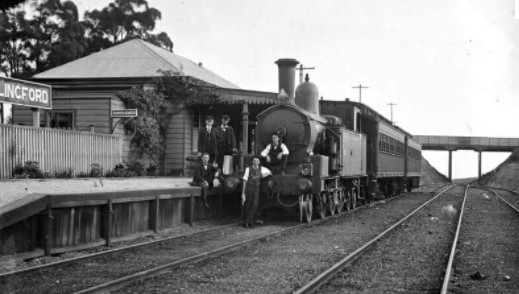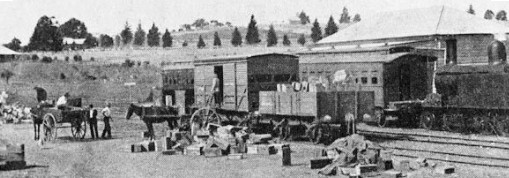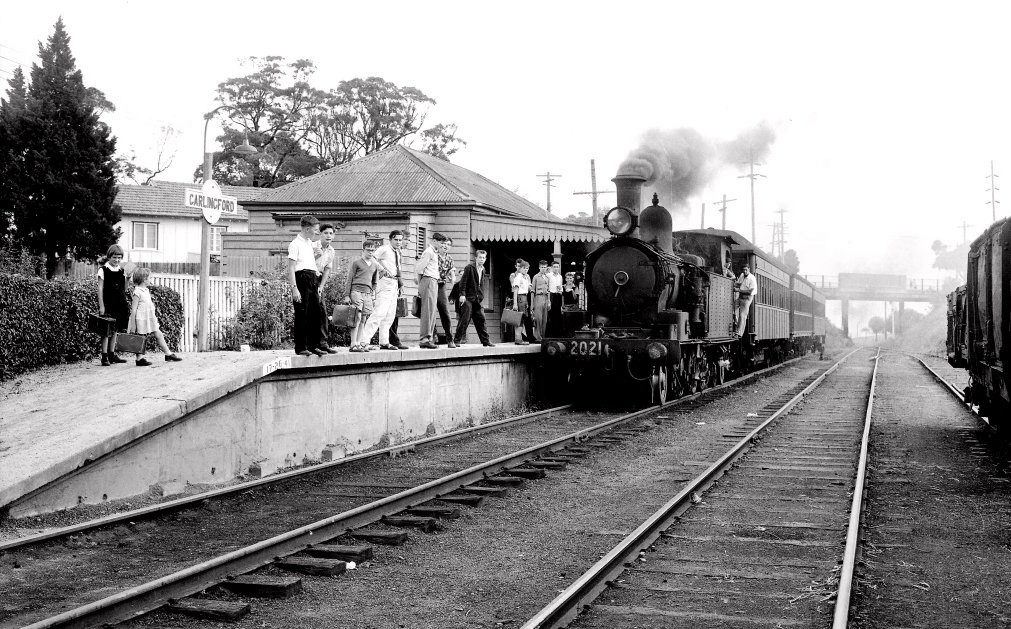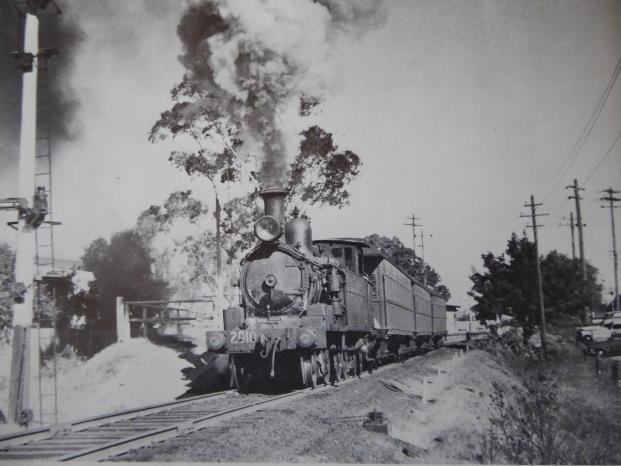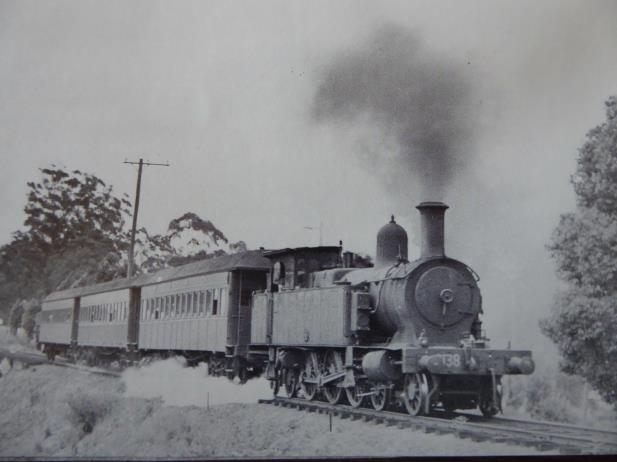By Coffee Pot to Carlo - “Don’t Worry, she won’t blow up” April 20, 1958 By David Burke
Sydney’s last steam suburban train is on the way out... The “Carlo Express” will never seem the same again.
“We're going to get an electric train at last,” said the pigtailed schoolgirl, sliding her bag across the coal-dust on the ancient leather seat. “We've been getting an electric train for the last two years!” said her mate - the girl with the bandaged knee. “Yes. Well, we're going to get it now. Dad said so this morning ...”
This week the Railways Department announced that the single track branch that runs up the hill from Clyde to Carlingford is to be converted to electric traction.
Housing development in the Dundas Valley and industrial growth along the Parramatta River have outpaced the train that was built to carry oranges, and the railways have “decided the service isn't good enough with steam”.
They'll spend £250,000 putting up the wires, making platforms and bridges and by December next, fast - but, oh! how impersonal - electric trains will snake their way along the track.
“The Carlo” (as the locals call it), with its tiny engines, biscuit box carriages and toy platforms, has long since belonged to another age.
Little girls in blue
A few days ago I paid 2/ to sample her charms and got full value for my money. I helped mothers lift their prams up into the carriages, opened the doors for elderly women, yarned with the guard and the enginemen in their cramped cab.
Schoolchildren - hundreds of them - make up most of the payload in the mid-afternoon - little girls in blue tunics and straw hats who announce themselves from “Rosehill High” and boys in green blazers from Carlingford Junior Agricultural Collage.As long as they're aboard, the “Carlo” doesn't lack nicknames. In off-peak periods she is a railmotor they call the Tin Hare. In peaks she is a regular train pulled by a tall-funneled 20-class engine - that's the Coffee Pot. I chose the Coffee Pot.
Engine 2024, black, grimy and built in 1891, three equally ancient carriages were waiting when I took the 18-minute ride.
We puffed out of Clyde station, clattered across the Parramatta Highway in the face of a queue of frowning motorists, pish-tished through deserted Rosehill racecourse platform, boom-boomed over the lattice bridge that spans Parramatta River the whistle blowing loud and long for the open level crossings that are a nightmare feature of the line.
“These carriages ran on the, Newcastle Flyer in the old days,” the guard tells me. “Then they did up to 70 miles an hour. They never go more than 30 here, and that's downhill.”
The stations, stubby wooden and drab brown, are few and easy to memorize - Rosehill, Camellia, Rydalmere, Dundas, Telopea and Carlingford.
“It's about time they did something about that Telopea platform,” a man says heatedly across the aisle. “it's made of old sleepers, I reckon, and so small you can't fit on to it when there's a crowd. The progress association's been moaning about it for years.”
Beyond Rydalmere industry is forgotten and “the Carlo” begins its long, steep climb, winding among suburban backyards where men mow their lawns and washing flaps on lines.
The whistle hoots again. Childish voices yell up from beside the track. “Darn kids.” says the guard, leaning out. "I've got to watch 'em. Some of the boys jump off when we're going slaw on the hills to show how smart they are." How slow does she go? “Oh, about 15 miles an hour.”
Suddenly, before you realise it, the journey is over and it's Carlingford passengers are unloading . . . and up ahead, where the builders once planned a route leading on to Dural, the rusting rails die against a barrier of fences.
How many people who laugh at the quaint “Carlo” know that it has a claim to fame as the only private paspassenger railway ever built in New South Wales?
It actually started as two railways - Mr Bennett's line, which ran from Clyde to Rosehill (and then down-river to a wharf at Sandown), and Mr Simpson's, which began at Rosehill and carried on to Carlingford. Simpson built his railway to carry the oranges - and their growers - from the orchards that once dotted these hills to Sydney. The Government made him put up a £3,000 deposit before he could lay a sleeper, though the money was to be refunded when £10,000 had been spent on construction.
He ran his first train on April 20, 1896 exactly 62 years ago today. Railway historians say “The Carlo's” early days are "shrouded in mystery and confusion." Certainly the line was trouble from the moment opened. It passed into the hands of the Bank of New Zealand, and finally was sold to the Government for mere £22,000 in 1900.
Steam spurts from valves
Nothing much has happened to it since then, except that a forest of houses have sprung up along the right-of-way where paddocks used to be, and station names have been changed. “Subiaco” was Camellia’s original name and Carlingford was called called "Pennant Hills" station.
We are rattling back towards Clyde, with engine 2021 and the three carriages, and Driver V. Sharpe and Fireman J. Sundgrew at the control. The footplate rocks alarmingly (surely we're doing 60!) and steam spurts from loose valves. “Don't worry,” says Driver Sharpe, “she won't blow up.”
The fireman leans on the whistle cord as we slow for Rydalmere station level crossing. The platform beyond it is packed with home-going workers from the factories and soon the carriages are creaking at the joints.
“The line's got so crowded that all the goods shunting has to be done after midnight, between the last train and the first in the morning,” Driver Sharpe shouts in my ear.
Did they say how she slips?
What happens to the steam crews when the electrics take over? I ask him. “We go to Enfield, probably to drive diesels or electrics,” he says. (Alas, no room for “Their Carlo's” on the railways of today.)
“What did they tell yer?” chorus the school boys when we get back. "Did they say how she slips in the winter mornings when the rails are wet?" asks one. "Yeah, or how she can't get up enough steam to climb a hill and has to run back again?" asks another. "Well, what ARE you, gonna say about her?" demands a freckled face. "That she's wonderful," I reply. "Gaaarn! She's a real rattler!" *
* The last paragraph in David Burke's story (above) was taken from his on train conversation with James Ruse pupils (or rather Carlingford Junior Agricultural High School pupils - as they were known in 1958). The phrase "Yeah, or how she can't get up enough steam to climb a hill and has to run back again?" - I can remember was my contribution. This newspaper cutting has stayed in my possession for the last 60 years. Kevin Swann.


